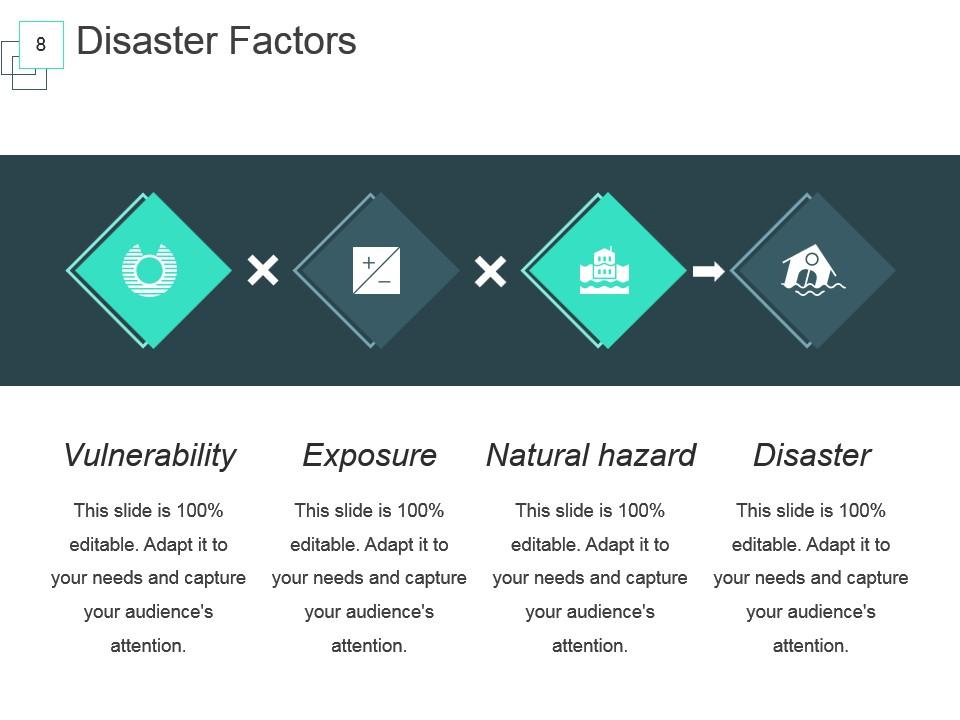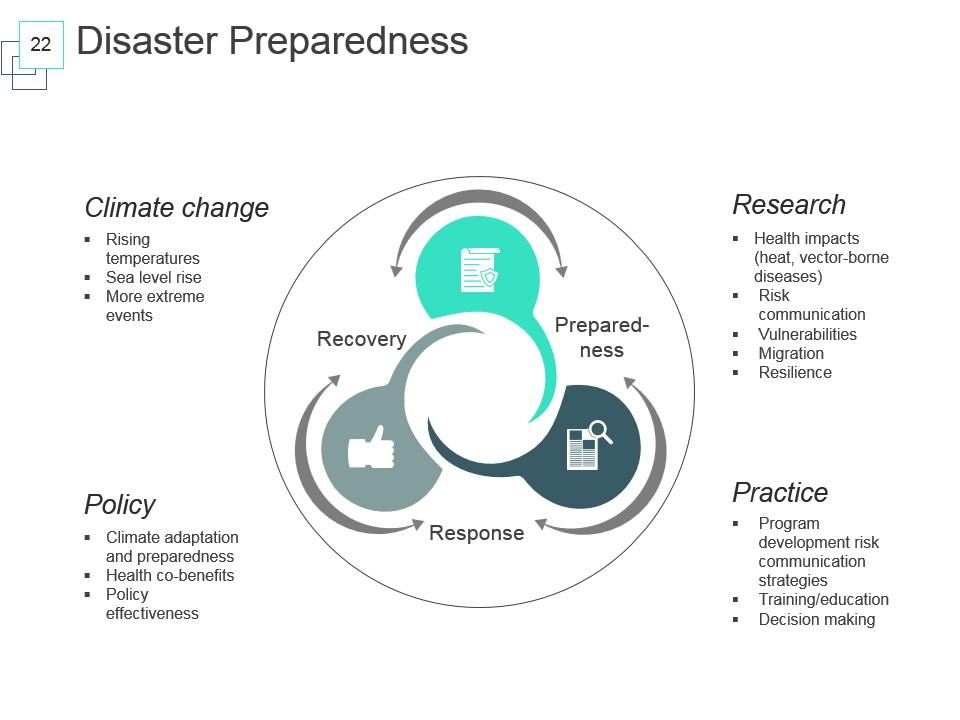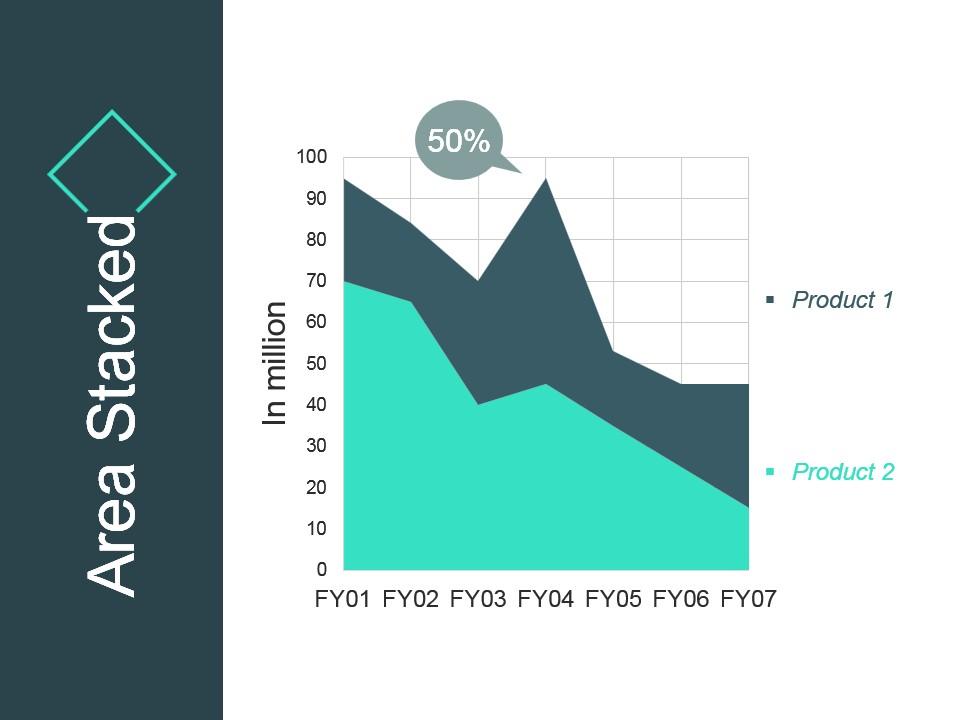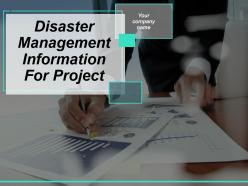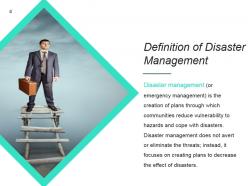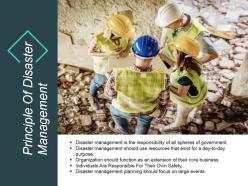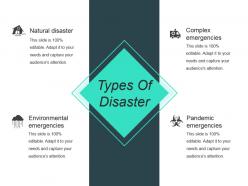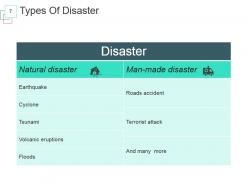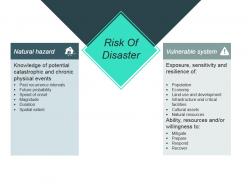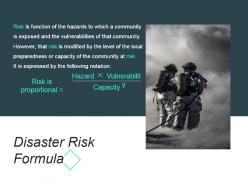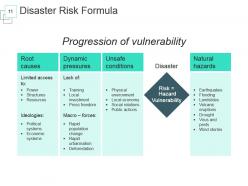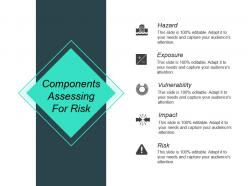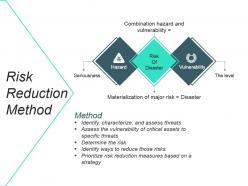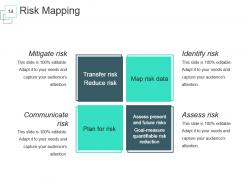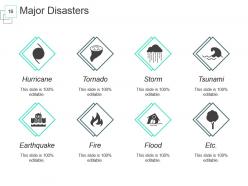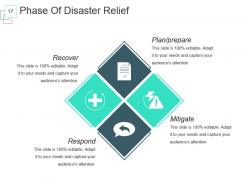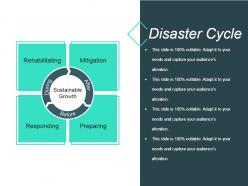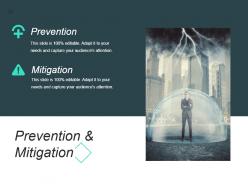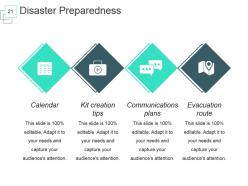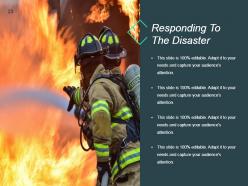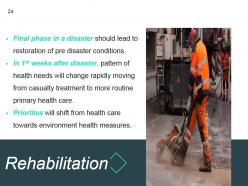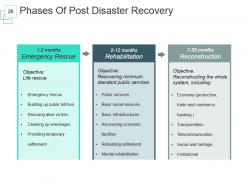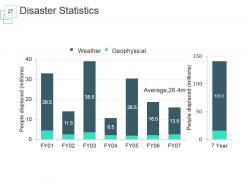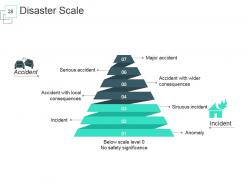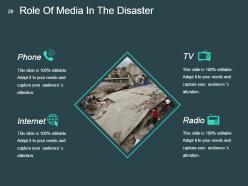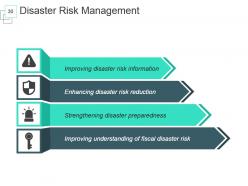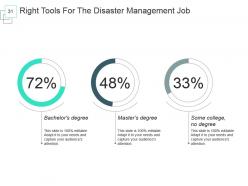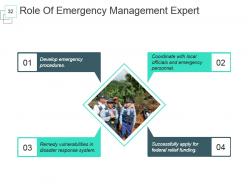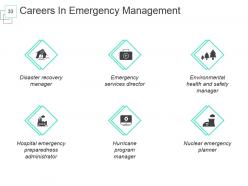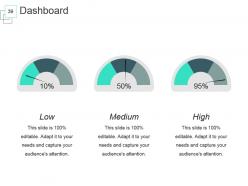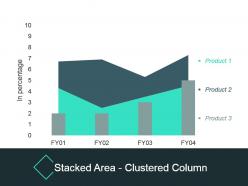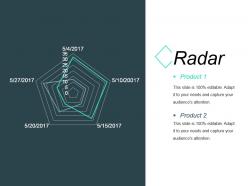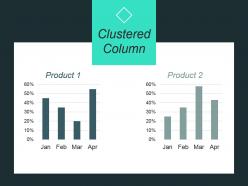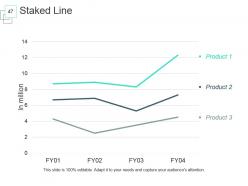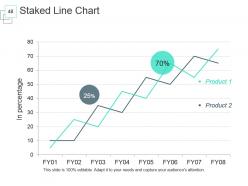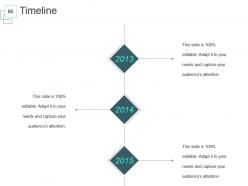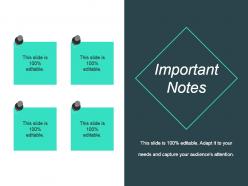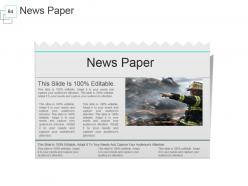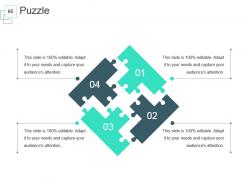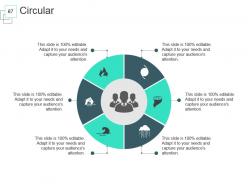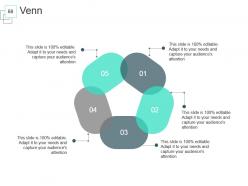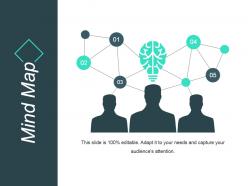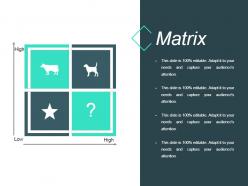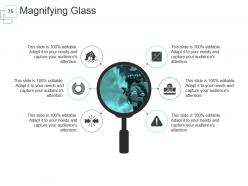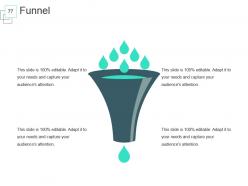Disaster Management Information For Project Powerpoint Presentation Slides
Building a professional disaster management information PowerPoint presentation now takes only minutes. The only thing that you must do here is to click and download our pre-designed Disaster Management Information for Project PowerPoint Presentation Slides. Using this PPT sample you can show a plan through which onlookers can reduce vulnerability to hazards and cope with disasters. This calamity management PowerPoint PPT can be used to help identify the threats and what needs to be realigned to minimize the effects of environmental emergencies, natural disaster, pandemic emergencies, complex emergencies. Besides this, you can also download this PPT sample deck file having 78 pre-made slides to showcase risk reduction method, risk mapping, progression of vulnerability, disaster factors, types of disasters, six stages disaster cycle, prevention, rehabilitation and reconstruction etc. Furthermore, PowerPoint presentation slides deck example included in this visually appealing deck helps to brief the onlookers about principle of disaster management, disaster cycle, disaster preparedness, disaster statistics, recovery and many more. In short, we have just the right PPT example to explain calamity management. Simply click to quickly download our Disaster Management Information For Project PPT presentation. Analyse and execute with our disaster management ppt Slides. They help you focus on growth.
You must be logged in to download this presentation.
 Impress your
Impress your audience
Editable
of Time
PowerPoint presentation slides
Presenting Disaster Management Information For Project PowerPoint Presentation Slides with a set of 78 slides to show your views on the subject. Use this ready-made PowerPoint presentation to present before your bosses, internal teams or the audience. All presentation designs in this deck have been crafted by our team of expert PowerPoint designers using the best of PPT templates, images and vector icons. When you download the PPT, you get the deck in both widescreen (16:9) and standard (4:3) aspect ratio. The content has been well-researched by our team of business researchers. The biggest advantage of downloading this deck is that it is fully editable in PowerPoint. You can change the colours, font and text without any hassle to suit your business needs.
People who downloaded this PowerPoint presentation also viewed the following :
Content of this Powerpoint Presentation
In today’s world, where climate change and dealing with it is increasingly a global policy concern, how can disaster management turn tragedies into stories of strength and resilience? A disaster is the disruption of the community or a society due to hazardous events and disaster management is a process of preparing and responding to disasters.
How can cultural heritage be protected and preserved through Disaster Management? Click here and check the Process Of Disaster Management And Recovery Plan.
Well-coordinated disaster management requires planning. This ensures fast and effective response and limits through identifying organizational resources, designated roles and responsibilities. Creating procedures and policies and holding activities improve disaster readiness. SlideTeam has crafted Disaster Management Templates as not just tools, but invaluable assets to create awareness and inspire positive action on such an important issue.
Discover here Presentation Slides on Prevention And Mitigation In Disaster Management.
Discover here our top 10 disaster management templates and start your journey by offering the best to the world. These PPT slides are 100% editable, customizable, and content-ready.
Let’s explore!
Template 1: Disaster Management
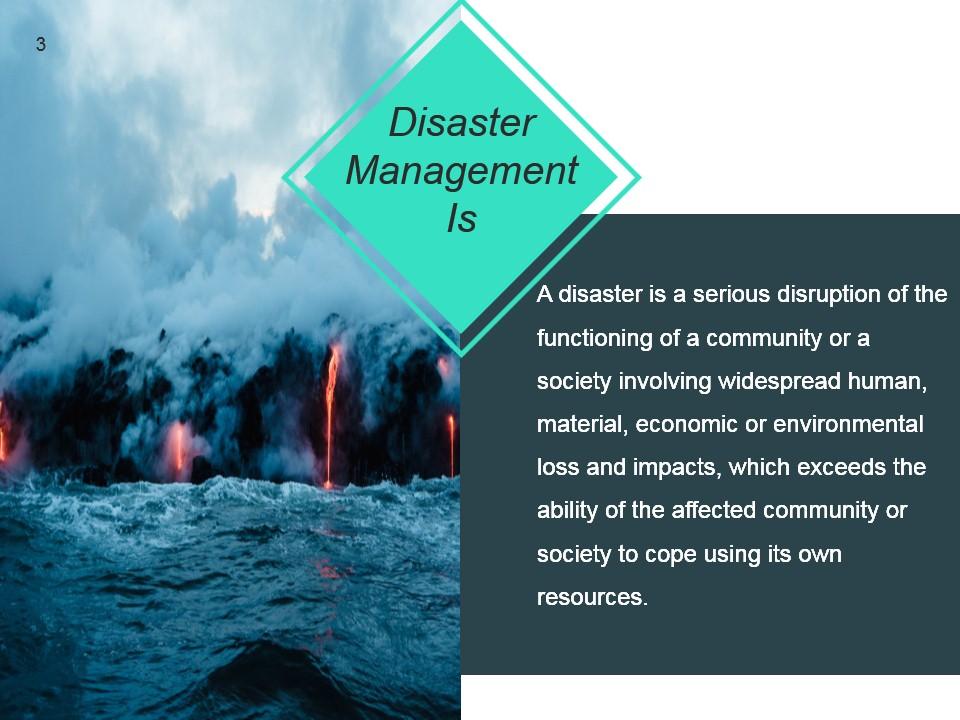
This Powerpoint Template refers to Disaster Management as the measures taken to prevent, prepare, respond, and recover from a disaster. It is a way to deal with human, material, economic or environmental impacts of the disaster. There can be both Natural and Man-made disasters caused by nature or by human origins. These disasters have a vulnerable impact on people and the world. Disaster Management is defined as a process of planning, organizing, coordinating, and implementing measures to prevent threats and risks and to facilitate rescue, relief, rehabilitation, and reconstruction.
Template 2: Principles of Disaster Management

Using his PPT, know the principles of Disaster Management and learn how they need to be implemented. The principles are:
-
Managing disasters
-
Mitigation
-
Response
-
Collaboration
-
Coordination
-
Planning
-
Preparation
-
Recovery
-
Risk reduction
-
Comprehensive
-
Conducting risk assessments and vulnerability analyses
-
Prevention
-
Progressive
Disaster management has an important role to play as it analyses and reduces the losses occurred from the disasters. It includes planning to reduce the effects of disaster, preparing and taking preventive steps, responding during the disaster, and assessing the strategy to modify and improve the response in case of recurrence of the disaster.
Template 3: Types of Disaster

Learn from this PPT, the types of disasters such as natural, man-made and hybrid that can cause a major loss of life and property. Natural disasters can be hydrological, geophysical, climatological, meteorological, and biological. Man-made disasters can occur by human intent, negligence, or error, and involve the failure of a man-made system such as Industrial accidents, Acts of terrorism, Shootings, Mass violence, Crime, Civil disorder, War, Cyber-attacks, etc. Hybrid disasters occur due to natural forces, but human intervention is present, such as cutting trees.
Template 4: Types of Disaster

As given in the template, the two main types of disasters—natural and man-made—have a severe impact on the world because of their frequency, complexity, and severity. They can be categorized on the basis of criteria such as speed and can be of two types, Slow-onset disaster, and Rapid onset disaster. Slow-onset disasters occur slowly over time and Rapid onset disasters happen quickly.
Template 5: Risk of Disaster

With this Powerpoint presentation, the Disaster risk has been expressed as the loss of life from injury or destruction and damage in a given period of time. Disaster risk is the consequence of hazards and the people and places that are vulnerable and exposed. Disasters are considered external shocks that gives rise to risks from hazardous activities. It is the combination of the severity and frequency of a hazard, the number of people and assets affected, and the vulnerability of damage. There are two types of Disaster risks: Intensive risk and Extensive risk. The Intensive risk is associated with low-probability and high-impact events, whereas extensive risk is associated with high-probability and low-impact events.
Template 6: Disaster Risk Formula

How to calculate Disaster Risk? From this PPT, learn the formula to calculate Disaster Risk and take preventive measures to reduce the loss. The formula is as follows:
Risk = Hazard (H) x Vulnerability (V) / Capacity
This equation can help us to understand the loss of life, property and livelihood from a disaster and the disruption and damage of economic activity and the environment. It tries to reduce the impact by improving the ability to mitigate and manage the risk. Disasters do not discriminate as they affect all but the most affected are the poor and marginalized.
Template 7: Disaster Risk Formula

Using the Disaster Risk Formula given in the template, calculate the risk prevailing and the amount of loss that is going to take place. This disruption on a massive scale, either natural or man-made, occurs in short or long periods and leads to human, material, economic, or environmental hardships, beyond the bearable capacity of the affected society. Proper planning, development, and preparation can help to prevent these hazards and by applying the risk reduction policies and strategies, the impact of the risk can be overcome. This formula not only detects the risk incurred but provides appropriate remedies to face the risks.
Template 8: Risk Reduction Method

From this PPT template learn the importance of Disaster risk reduction, the practice of reducing disaster risks by analyzing the factors that lead to it. It is an approach for planning and taking steps to reduce the chances of disasters and their effects. DRR aims to make the world stronger and less vulnerable and be prepared to handle disasters. DRR can reduce the severity of an unforeseen event and its impact. For example, climate change can increase climate hazards, so DRR and climate change adaptation are looked at together in development efforts. People from federal governments, local communities or agencies can propose DRR strategies and mitigate the risks from the disasters.
Template 9: Disaster Level

With this template, classify the Disaster levels based on the severity of natural disasters and man-made disasters. They can also be classified on the basis of the event’s chief cause, such as geological, biological, or meteorological-hydrological events. A geological event includes volcanic eruptions, earthquakes, and landslides. Biological events include epidemics and epizootics, i.e., diseases in animals and humans. When classifying a disaster, the consequences of a disaster also need to be considered. Demographic effects include reduced fertility or increased mortality rates while physical effects include damage to machinery, buildings, land, and more.
Template 10: Major Disasters

Use this slide to list and chronicle major disasters that have taken place to date, such as hurricanes, Storms, tsunamis, Fire, tornados, Earthquake, floods, etc. These are some of the deadliest disasters that have killed lakhs of people and have destroyed the livelihood of many. Many countries, states, and cities have been affected by these disasters resulting in human and financial loss. While many of these disasters are said to be an act of God, as per research, the prime reason behind these is also unchecked and selfish human activity.These disasters cannot be controlled, but with proper planning, their effects can be reduced.
NEED FOR DISASTER MANAGEMENT
The focus of all disaster management is to minimize the long-term impact of business operations and reduce the impact of disruptions. Creating such plans requires a business to be aware of threats that may affect them, and to understand what resources are available to manage them. Putting this into a clear and efficient plan can help to navigate the unpredictable future. Conducting regular training using the plan, and making changes to ensure that the plan is up to date with the regulatory requirements is crucial.
Disaster Management Information For Project Powerpoint Presentation Slides with all 78 slides:
Our Disaster Management Information For Project Powerpoint Presentation Slides let your thoughts come free. They will detach from any dogma.
-
Innovative and Colorful designs.
-
Unique research projects to present in meeting.






